Isambard Kingdom Brunel's father, Marc Isambard Brunel, was a French civil engineer and immigrant to England. Sophia Kingdom was the daughter of William Kingdom, a contracting agent for the British navy. She decided to study French to help her father. While in France she met Marc and they married. Isambard was the last of their children and the only son.

The Engineering Mastery of Isambard Brunel
by LiamBean
Burnel changed civil and mechanical engineering by thinking big. But it wasn't enough just to think big, oversize projects came with large problems requiring big solutions.
Childhood, Education and Advanced Studies
Engineering, a Family Profession
Isambard was born April 9, 1806 in Hampshire England. The family moved to London in 1808 where he is reported to have had a happy childhood.
His father Marc, took Isambard's education seriously with his own training. By the time he was four Isambard was already a fair hand at drawing. By the time he was eleven or twelve he understood and could recite the axioms of Euclidean geometry. He was also fluent in both English and French.
Marc encouraged his son to draw any buildings he found interesting and to also critique them for obvious faults. Isambard attended grade and grammar school in England.
At eight Marc gave Isambard's education over to Dr. Morrell who taught classic literature and thinking. At fourteen the pair moved to France where he was enrolled at the College of Caen in Normandy and then at the Lycée Henri-Quatre in Paris.
Back in England Marc was incarcerated in debtor's prison for the amount of £5,000. After three months Marc threatened to contact the Tsar of Russia for employment. Rather than lose a prominent engineer the British government came up with the £5,000 on the condition that Brunel the senior stay in England.
Back in France Isambard was presented to École Polytechnique in as a student candidate, but the school turned him down because he was not a French citizen. Instead he studied under Abraham-Louis Breguet a master clock-maker in Paris. After completing his studies in Paris Isambard returned to England.
Thames River Tunnel Project
The first successful tunnel under a major water-way
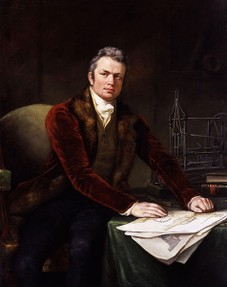 In 1820, at fourteen years of age, Isambard began working with his father on engineering projects the likes of which England had never seen.
In 1820, at fourteen years of age, Isambard began working with his father on engineering projects the likes of which England had never seen.
Up to that time a tunnel under a large navigable river had never been successfully completed, but that did not stop the Brunels.
They began by submitting a tunneling plan to Parliament in 1823. By this time Marc (image left) had designed what he called a "tunnel shield." This "shield" would protect the miners at the top, bottom, sides and leading edge of the tunnel with a strong structure from which to dig. The shield supported the burrowing edge of the tunnel while protecting the miners. The tail end of the shield was used as a support for brick-layers to line the completed section of tunnel. This was necessary to keep the tunnel walls from caving in during and after construction.
Soil under the Thames was the problem. Rather than digging through bed-rock or granite, tunnelers encountered loose rock, mud, and water.
An earlier attempt at tunneling under the Thames failed between 1805 and 1809 when the tunnel walls repeatedly collapsed threatening the lives of the miners. England's engineers declared that any attempt to build a tunnel under the Thames was "impracticable" and encouraged the government to stick with a bridge instead.
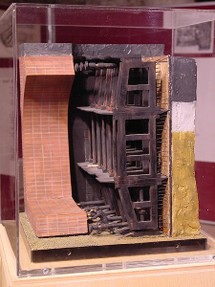 Tunnel Shield
Tunnel Shield
Marc Brunel, and his son Isambard, knew the "tunnel shield" method would solve the problems of loose waterlogged soil. With the assurance that this new method would work, Marc Brunel and partner Thomas Chocrane sought funding in 1824. The tunnel project was begun in 1825.
The shield itself was massive. Made up of twelve sections, four across and three down, each section weighed seven tons. Each of the twelve sections housed one or more miners. A door facing the working edge opened allowing the miner to dig out loose dirt. When digging was completed for the day or during a break the door was closed. The trailing edge of the shield was used by bricklayers to line the tunnel. Feet at the trailing edge of the shield pushed against the brick advancing the tunnel shield forward.
To pay for the effort the Brunels charged curious Londoners a shilling each to view the work inside the tunnel. It is estimated that six to eight hundred visitors made the hazardous tour each day. This was quite literally an early form of "crowd-funding."
First Flood
In May 1827 the miners encountered a low point in the river above that met with the tunnel below. A flood resulted. Using a diving bell and bags filled with thick clay, Isambard plugged the hole. This was a successful repair and after draining the tunnel of all the water Isambard held a banquet in the tunnel at the site of the repair.
Second Flood
In January 1828 there was a second flood. This time six miners made it to the main stairwell to escape, but Isambard attempted to leave via the emergency exit. Unfortunately it was locked, but by making a lot of noise Isambard alerted a contractor outside who broke down the door to extract the trapped engineer. Though Isambard was unconscious by that time Mr. Beamish got to him. Isambard made a quick recovery.
This second flood ended the tours and the money they generated. The tunnel was walled up for seven years with no progress made.
Tunneling Resumes
In 1834 Marc Brunel was able to raise the required capital to resume tunneling. The old tunnel shield was replaced by an improved device of similar design. There were more floods occurring in August 1837, November 1837, March 1838, April 1840, but the tunnel was finally completed in 1841. Stairways and pumps were added between 1841 and 1842 and the tunnel was finally opened in 1843. The tunnel, though a resounding success in engineering was a money pit costing £454,000 to dig and £180,000 to outfit with lighting, pumps, and stairs.
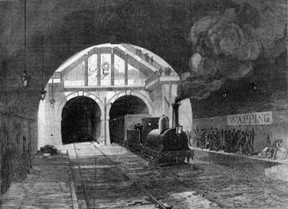 East London Railway
East London Railway
In 1865 the tunnel was purchased by the East London Railway Company.
Though the original idea of the tunnel was to accommodate horse-drawn carriages, the amount of head-room the Brunels designed into the tunnel was perfect for loading and unloading rail cars.The tunnel was never used for its original purpose.
London Underground
In 1933 the East London Railway was incorporated into the London Underground and the Thames Tunnel automatically became the oldest structure in the system. In 1993 the Thames Tunnel was shut down for major repairs and was reopened again in 2007.
The tunnel is so beloved that announced plans to significantly alter it structurally met with public outcry. It was finally determined that the stations along the tunnel would be improved structurally while retaining as much of the original design as possible. This delayed the reconditioning effort by four years as the tunnel was slated to reopen in 2003.
Marc Brunel Suffers a Stroke
Isambard Gains Promenance
The tunnel project, by all accounts, was Marc Brunel's undoing. The project itself caught Prince Albert's attention and a young Queen Victoria knighted Marc. The Wapping side of the tunnel opened in August of 1842; Marc suffered a major stroke three months later.
The tunnel fully opened in early 1843 and Marc, though quite weak, attended the ceremony. Marc never accepted any more major assignments after the Thames Tunnel project.
Though he no longer attempted major projects Marc did help his son on assorted projects. Marc even attended the launch ceremony of The Great Britain. He suffered another, even more debilitating stroke in 1845 and died at the age of eighty in 1849.
Bridges and Spans
Suspension and Trusswork Bridges
Isambard was also a first class bridge designer and builder. Two of his most famous are a suspension bridge and a "bow-string" girder bridge. At the time the Clifton Suspension Bridge was the longest such bridge in the world.
Perhaps what is most notable about all of Brunel's bridges is that each is uniquely different from the others and in most cases different from any previous bridges regardless of who built them. Brunel also had a talent for making the designs not only structurally sound, but pleasing to the eye.
Below is an image gallery of four of Brunel's bridges. You'll notice that the Royal Albert Bridge has Brunel's name prominently displayed on it's entrance arches.
The two "bows" over the Royal Albert bridge are not circular tubes. They are "lenticular" ovals. These bows, supported by the two entrance pillars and central support pillar, in turn support the road-bed suspended beneath them. It is not a true suspension bridge, but is a unique design incorporating the elements of suspension and arch bridge. In this case the Royal Albert consists of two inverted arches from which suspension struts hang. These, in turn, support the road-bed.
At the time of its completion the Maidenshead brick double arch bridge was the longest such bridge in the world. The bridge also has the distinction of featuring the longest and flattest arches of any arch bridge. The arches are one hundred twenty eight feed wide and only twenty four feet high.
The Great Western Railway
A rail line designed specifically for passenger comfort
The Great Western Railway (GWR) was founded in 1833 and received its funding via the enabling Act of Parliament in 1835. The first of the trains ran by 1838.
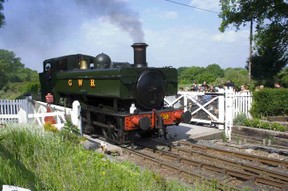 The initial line was designed and engineered by Isambard Kingdom Brunel. In the design a broad track (or gauge) was chosen for passenger comfort and wider cars. Brunel's choice of gauge was a full twenty-eight inches wider than standard gauge. Though Brunel was questioned on this "non-standard" gauge his reply was that the "standard" (four feet eight and one quarter inches) gauge was appropriate for mining cars not passenger and freight service. The truth of this assertion was borne out with happy passengers and larger (wider) freight cars that could carry much more cargo.
The initial line was designed and engineered by Isambard Kingdom Brunel. In the design a broad track (or gauge) was chosen for passenger comfort and wider cars. Brunel's choice of gauge was a full twenty-eight inches wider than standard gauge. Though Brunel was questioned on this "non-standard" gauge his reply was that the "standard" (four feet eight and one quarter inches) gauge was appropriate for mining cars not passenger and freight service. The truth of this assertion was borne out with happy passengers and larger (wider) freight cars that could carry much more cargo.
The line ran from London to Wales and back and included specials such as The Flying Dutchman, the Cornish Riviera Express and the Cheltenham Spa Express. As you may guess from the names these were holiday trains designed to take passengers to vacation and resort areas of the British Island. The line even included motor buses to take passengers from the station to the individual hotels (also owned by Great Western) and ships. (see next section)
Gauge War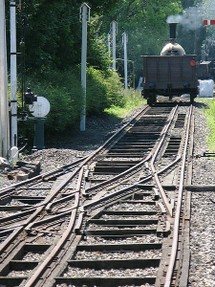 As late as 1851 the GWR was one hundred percent broad gauge. But starting in 1856 some standard gauge tracks were laid down. There were also sections of railroad that consisted of "mixed gauge" combining broad and standard gauge on one line. (see picture left)
As late as 1851 the GWR was one hundred percent broad gauge. But starting in 1856 some standard gauge tracks were laid down. There were also sections of railroad that consisted of "mixed gauge" combining broad and standard gauge on one line. (see picture left)
By 1866 broad gauge rail was only half of the track laid for the line and by 1891 eighteen hundred miles of track were standard gauge to only one hundred seventy one miles of Brunel's original broad gauge. Eventually the broad gauge designs disappeared commercially, though some is still in evidence for it's historical value.
The Great Western Railway was quite successful, though it had a slow beginning in the first year.
| Year | Passengers | Total mileage | Receipts |
|---|---|---|---|
| 1850 | 2,491,712 | 1,425,573 | £630,515 (£53.7 million as of 2013) |
| 1875 | 36,024,592 | 9,435,876 | £2,528,305 (£177 million as of 2013) |
| 1900 | 80,944,483 | 23,279,499 | £5,207,513 (£418 million as of 2013) |
| 1924 | 140,241,113 | 37,997,377 | £13,917,942 (£588 million as of 2013) |
| 1934 | 110,813,041 | 40,685,597 | £10,569,140 (£556 million as of 2013) |
Box Hill Tunnel
Longest Tunnel to that Date
Box Tunnel
If digging the first viable tunnel under a major river wasn't enough for Brunel he also engineered the longest through hill tunnel to that date with the Box Hill tunnel.
Box Hill was a major impediment to the proposed line through the area. Rather than attempt the steep grades going up one side of the hill and down the other (see image below) Brunel proposed a tunnel.
To that time this was thought impossible by most engineers. The tunnel would have to be nearly two miles long (1.82 miles) and bored through unknown material. The line through the tunnel would also have to drop one foot for every hundred in order to come out "at grade" on the other end.
As was typical "impossible" was not an obstacle. In routine Brunel fashion eight pilot holes were drilled along the proposed route to determine the composition of the material to be bored through. These pilot holes were evenly distributed along the proposed route through the hill to the depth of the eventual track-bed. Brunel found that the majority of the material was limestone (Oolite Limestone) and "Fuller's Earth" which is a loose clay. With the experience gained with the tunnel shield building the Thames Tunnel neither material was much of an impediment.
The tunnel was begun in 1838 and completed in 1841. Digging was conducted from both ends meeting in the middle. Upon meeting they were less than two inches off. Quite a feat of engineering for the time.
Upon completion it was the longest train tunnel ever dug anywhere on earth.
Great Western and Great Britain Steamships
Building Larger Has Benefits
Great Western Steamship
In 1835, before the Great Western Railway had opened, Brunel proposed extending its transport network by boat from Bristol across the Atlantic Ocean to New York.
The Great Western Steamship Company was formed by Thomas Guppy and a bevy of investors with Isambard Brunel as chief engineer.The keel for the Great Western was laid in 1836 and the ship finished in 1837. It was the largest steam-ship built to that date.
Most engineers of the day were certain that a steam powered ship could not carry the required coal for the trip and still have room enough for passengers. For that reason it was widely disputed whether it would be commercially viable for a ship powered purely by steam
Brunel determined by formula that the amount of cargo a ship could carry increased at three times it's cross-sectional dimensions, whereas the amount of water resistance a ship that size experienced only increased by the square of its dimensions. In effect these formulas proved that a larger ship was actually more fuel efficient than a smaller design.
In other words the larger ship would require less fuel overall than a smaller ship.
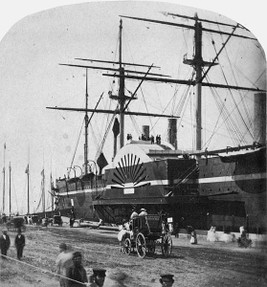 Overall Design
Overall Design
The Great Western was a oaken, side-wheel paddle steamer with an auxiliary propeller at the stern. It also featured four sail masts. In engineering parlance when a design incorporates secondary backup systems it is said to be designed with the "belt and suspenders approach." Brunel's design had one primary and two backup propulsion systems making it a "belt, suspenders, and spandex approach."
She was the largest steamship built for one year only, until the British and American's British Queen went into service. The Great Western was powered by two steam engines for the paddle wheels with an auxiliary steam engine for the stern mounted propeller. The power output of the steam engines for the paddle-wheels was seven hundred fifty horsepower.
Record Holder for Five Years
The Great Western broke and held the Blue Riband trophy for fastest Atlantic transport for five years running. She steamed from Bristol to New York for eight years until the company went out of business after It failed to secure a mail transport contract for British Mail.
Eventually the Great Western was sold to the Royal Mail Steamship Company. It was eventually scrapped in 1856.
The Great Britain
The Great Britain was a departure from the Great Western design in that it did not have paddle-wheels nor was it built of oak. Instead the ship was built of iron and relied for propulsion with the now traditional propeller design. Because this ship was such a revolutionary departure from then accepted design it ran into repeated design problems.
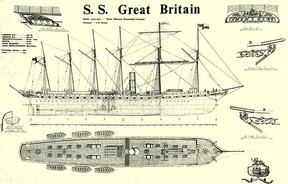 The ship was powered by two steam engines mounted amidships. These engines were powered by two boilers with eight fireboxes total. It could produced one thousand horsepower.
The ship was powered by two steam engines mounted amidships. These engines were powered by two boilers with eight fireboxes total. It could produced one thousand horsepower.
Brunel decided that a gear system to transfer power from the engine to the propellers used on other steam ships was just too noisy. As ever, with passenger comfort in mind, Brunel came up with a "silent chain" design that substantially reduced the noise of the drive.
He also chose an unproven propeller design that ultimately failed not once, but twice, when three of the six propeller blade broke off mid-trip. On return to port in Liverpool the ship was refitted with a cast-iron four bladed propeller. Unfortunately, the chain drive showed excessive wear and the ship remained at port for this additional repair.
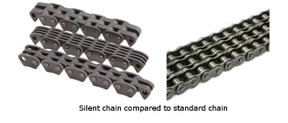 The problems were worked out, causing investors great concern, but the next year the Great Britain made routine record breaking crossings from Liverpool to New York.
The problems were worked out, causing investors great concern, but the next year the Great Britain made routine record breaking crossings from Liverpool to New York.
The Great Britain was the first steamship of it's time to be built of iron, powered by steam, and driven by propeller.
Brunel combined these elements because a screw propeller system was lighter in weight than an equivalent paddle-wheel design, it also ran on more efficient steam engines than those of the Great Western. These combined savings in weight translated to savings in space as well. The Great Britain could carry more passengers and/or cargo as a result.
Grounding and Re-purposing
In 1846 the ship made two successful trips trans-Atlantic, but on the third trip was run hard aground on the Irish coast. The ship sat there for the better part of a year while Brunel spent time and effort keeping the ship from being broken up in storms and tides. Eventually the ship was re-floated and taken to port in Liverpool at a cost of £34,000. This finally broke the financial backs of investors and the ship, originally costing £117,000 to build, was sold for a paltry £25,000.
The ship eventually saw one more trans-Atlantic trip and then moved to Australia just in time for the 1851 Australian gold rush. Though the assignment was to be temporary, the ship saw service there for the next year.
Once the gold rush was over the ship then saw extended service as a round-trip passenger transport between Australia and Great Britain for almost thirty years. In that time she was considered the most reliable passenger ship to make that run.
She eventually made her way to the Falkland islands were she caught fire and was eventually abandoned.
Rescue and Restoration
In 1970 an effort was made to rescue and restore the great ship. By February 1970 the ship was re-floated and by April 5th she was back in Bristol harbor. She currently sits in dry-dock in a special birth. The hull at the water line, due to extensive corrosion, is kept under glass at a relative humidity of twenty-two percent. This is just dry enough to prevent the iron from corroding further. With this effort the conservation was completed, and in July 2005 visitors were allowed to view the vessel.
Death and Lasting Achievements
Isambard Kingdom Brunel set engineering records for size and distance throughout his lifetime. He is still considered one of Britain's greatest citizens.
He died of a stroke at the age of fifty three not quite ten years after his own father's death. Isambard, Marc, and Marc's wife Sophia are all buried in the same plot in Kensal Green Cemetery.
In his short life-span Isambard built the longest bridge spans, the longest rail lines, the largest ships, and the longest tunnels.
As with so many notable engineers dissent from fellow engineers and design challenges did not prevent Isambard from achieving his goals. Notable in his achievements are:
- The Thames Tunnel took almost eighteen years to complete, but it was completed.
- The Clifton Suspension Bridge was completed five years after Isambard's death.
- The construction and launch of the first successful all steam powered trans-Atlantic ship.
- Designed the first ship, the Great Eastern, to incorporate a double hull; another first.
His break-through designs continue to inspire and influence engineers today with;
- the tunnel shield which is still an integral part of tunnel boring equipment today
- his steam-ship designs which heavily influenced the designs of both Titanic and Britannic
- large oceangoing ships became the norm due to his influence
- his silent chain design, though problematic in his lifetime, is still in use today
You might also like
The Engineering Mastery of the Wright BrothersMost people recognize that the Wright brothers mastered powered flight, but f...
How secure are Swipe CardsSwipe cards or RFID Cards are used for all aspects of security. Should we re...
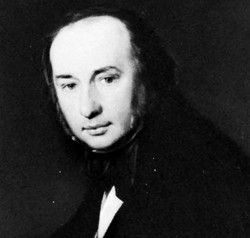





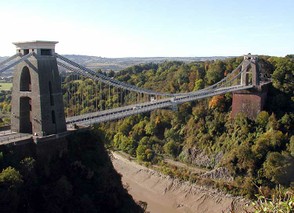
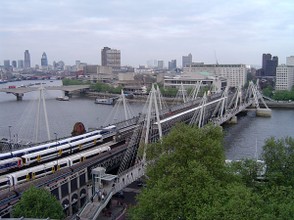
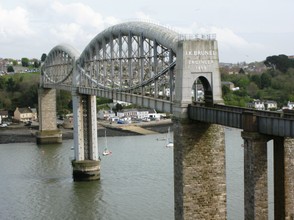
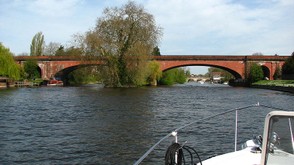
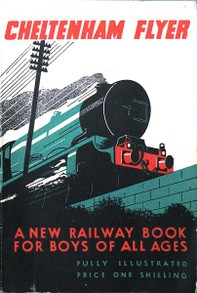
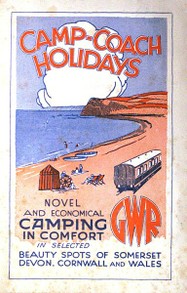
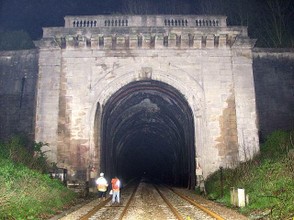
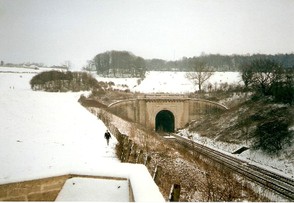
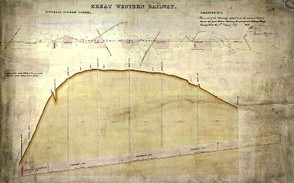
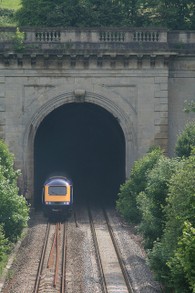
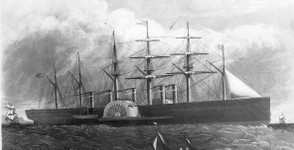
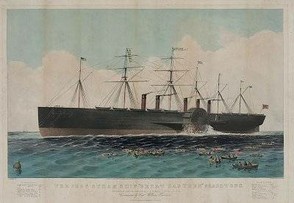
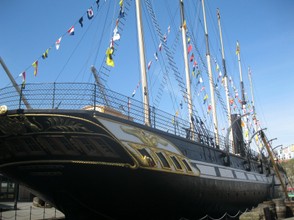
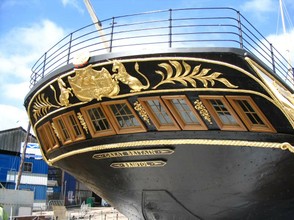
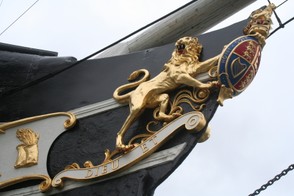
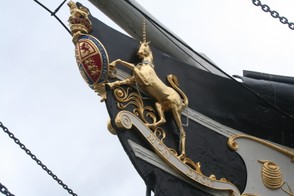

 Crêpes and Crêpe Disheson 09/14/2016
Crêpes and Crêpe Disheson 09/14/2016
 About Me - Liam Beanon 11/28/2014
About Me - Liam Beanon 11/28/2014
 About Ebolaon 11/08/2014
About Ebolaon 11/08/2014

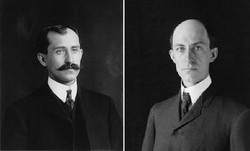

Comments
It is very interesting. Though I'm a "Yank" by geography I find British Engineering and engineering pioneers fascinating.
adrian: What you relate here seems to have happened many times in the Victorian era. Lack facts and the means to acquire them? Make something up.
Again, I appreciate you taking the time to point out the error.
adrian: Thanks for the correction. I do wish I had access to such things. Nevertheless thank you for pointing out the error. I've corrected it in the text.
Thanks for reading John.
Great info. You have done the research!